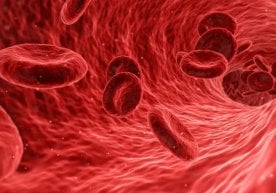
Losing a few hair strands every day is a natural occurrence. However, if the shower drain clogs frequently, dozens of hairs remain on the brush, and the density of your hair noticeably decreases — it may be a warning signal from your body.
Most people see hair loss merely as an aesthetic issue. But according to trichologists, there may be many physiological and pathological reasons behind it. Stress, hormonal imbalances, poor nutrition, illnesses, and even improper diets can seriously affect hair follicles.
Most common causes of hair loss
1. Vitamin and nutrient deficiency:
Iron, vitamin D, zinc, biotin, and proteins are essential for hair follicle function. When they are lacking, the follicles weaken and hair becomes brittle and thin.
2. Psychological pressure and stress:
In many people, a sharp increase in hair loss is observed 2–3 months after severe emotional distress. This indicates that the body is responding by conserving energy.
3. Hormonal imbalance:
In women, reduced estrogen, polycystic ovary syndrome, postpartum changes; in men, an increase in DHT hormone weakens follicles and leads to thinning.
4. Medication effects:
Drugs for diabetes, thyroid, rheumatism, intestinal diseases, antidepressants, and especially chemotherapy can damage hair roots.
Main types of hair loss
– Hereditary (androgenetic alopecia): Starts with receding hairline or thinning at the crown. In women, diffuse thinning occurs without forehead recession.
– Telogen effluvium: Hair loss occurs 2–3 months after stress, high fever, pregnancy, or surgery.
– Alopecia areata: Round bald patches appear due to immune system attacking healthy follicles.
– Traction alopecia: Constant pulling from tight hairstyles can weaken follicles over time.
– Toxic alopecia: Caused by chemotherapy, antibiotics, mercury, arsenic, and other toxins.
– Scarring alopecia: Burns, trauma, or infections can cause irreversible follicle damage.
How is diagnosis done?
Doctors use the following methods to identify the cause:
– Trichoscopy: A microscopic analysis of scalp and follicles.
– Blood tests: Evaluate ferritin (iron storage), vitamin D, thyroid hormones, and DHT levels.
– Scalp biopsy: Used when the cause is unclear.
– Pull test: Hair is gently pulled — if more than 6–8 hairs come out, the loss is severe.
– Phototrichogram and densitometry: Camera-based digital analysis of growth rate and hair density.
How is it treated?
There is no one-size-fits-all solution. Each case requires proper diagnosis and targeted therapy. Consulting a specialist promptly is the smartest step to preserve existing hair.
Remember: hair loss is not just what you see in the mirror — it may reflect your internal health and lifestyle. Timely response ensures confidence, hair density, and inner balance in the long run.
Read “Zamin” on Telegram!












